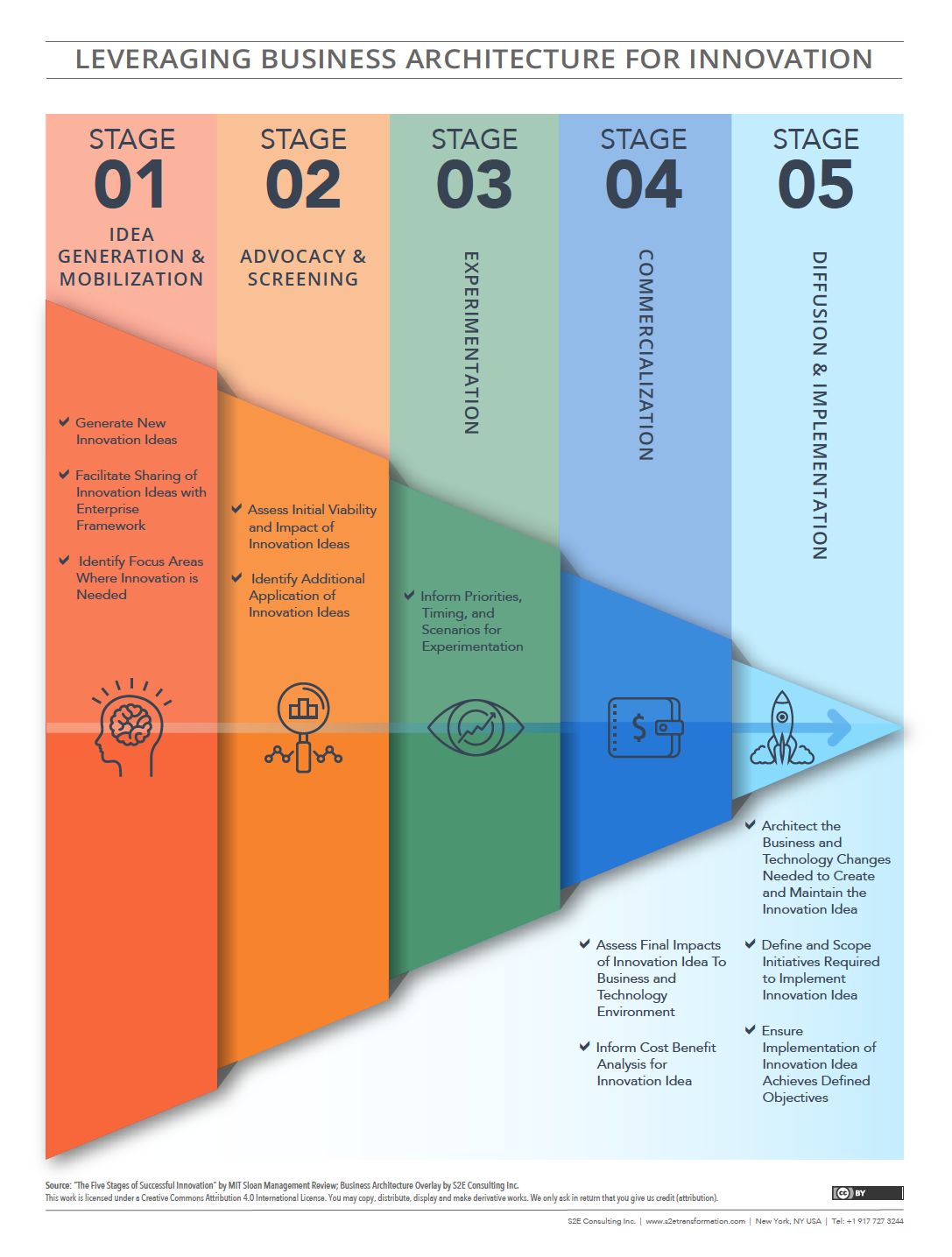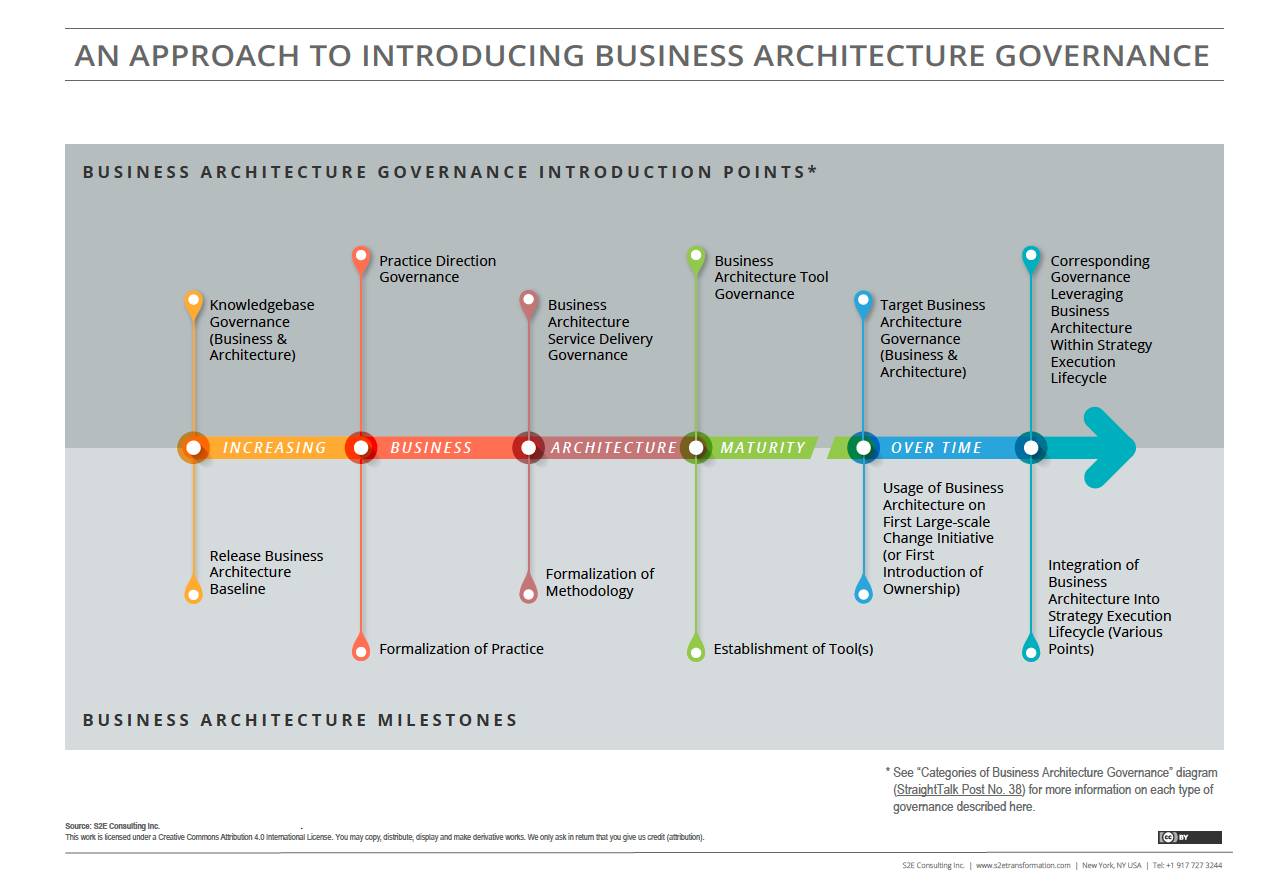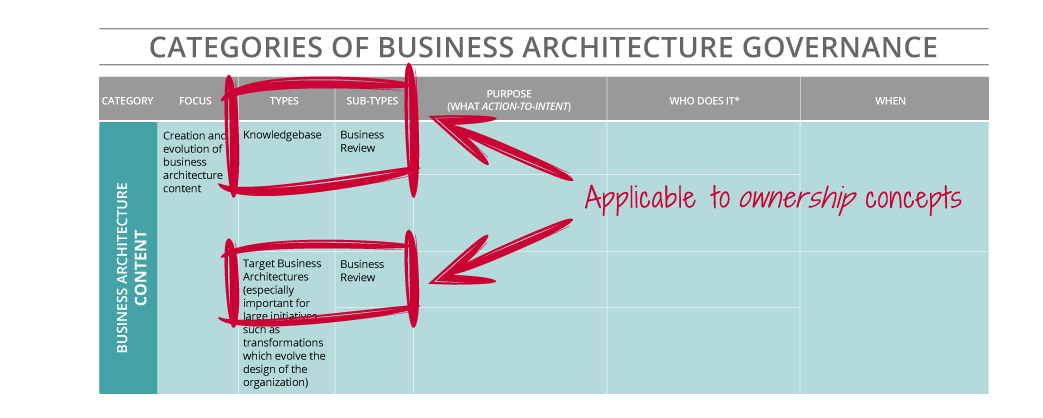![]() In this installment of StraightTalk, we will explore an often overlooked bestie of business architecture: innovation. These two disciplines can and should team up to enable an organization to fully benefit from its innovation activities.
In this installment of StraightTalk, we will explore an often overlooked bestie of business architecture: innovation. These two disciplines can and should team up to enable an organization to fully benefit from its innovation activities.
Doesn’t business architecture get in the way of innovation and slow it down?
No. The idea that business architecture and its structure limits or slows down innovation in any way is a misconception.
When leveraged correctly, business architecture actually makes innovation more expansive, impactful and effective.
Explain.
For example, business architecture can help to target all of the areas which need innovation and identify new applications for innovation ideas. It allows us to make sure that we’re innovating on the right things that are most relevant to the business. Business architecture can help weave innovation into the fabric of the organization, which not only spreads ideas but also gives even more credence to the discipline.
As with any idea or defined business direction, business architecture also plays an important role to assess viability and impact of innovation ideas, and then makes them real by translating them into a coordinated, actionable set of initiatives across business units.
Business architecture is always looking out for the enterprise though, so it does play a role in helping the business to understand how any innovation ideas fit with the bigger picture activities and priorities. This way an organization can pursue innovation ideas when they truly make sense, regardless of how exciting and cool they are.
How specifically does business architecture help with innovation then?
Business architecture plays a role throughout the entire innovation life cycle. Here’s a brief overview of how:
- Stage 1: Idea Generation and Mobilization – First, as a result of their efforts and perspectives, business architects can generate new innovation ideas. In addition, the business architecture framework (especially value streams and/or capabilities) can be leveraged to facilitate the sharing of innovation ideas across the enterprise. Think about all of the great ideas that are generated through innovation challenges and efforts. If they are tied to the reusable business architecture, they can easily be found and used. Business architecture can also help to identify focus areas where innovation is needed, either resulting from business priorities or known areas of improvement. It even can help to provide specificity and clarity on the problem to be solved or an opportunity to be pursued.
- Stage 2: Advocacy and Screening – Business architecture can be used to assess initial viability and impact of innovation ideas, narrowing the focus on only those which are worthy of our precious resources and mindshare. It can also be used to identify additional applications for innovation ideas. For example, using the business architecture, a business architect can readily identify other business units, products and/or scenarios which might have use for the same innovation idea in other contexts. This could even help to increase the support and funding for an innovation idea.
- Stage 3: Experimentation – Based on an understanding of overall business priorities as well as applicable scenarios (as mentioned above), business architecture can inform priorities, timing, and scenarios for innovation idea experimentation.
- Stage 4: Commercialization – Once an innovation idea is ready for commercialization, then it hits the sweet spot of how business architecture translates ideas into concrete, enterprise actions to make them real. (See Post No. 3 for more on business architecture’s role in strategy translation and execution.) Business architecture can be used to assess the final impacts on the business and technology environment. In addition, it can provide a structure for and inform the cost-benefit analysis.
- Stage 5: Diffusion and Implementation – Here the business and IT architects will architect the business and technology changes needed to create and maintain the innovation idea. From there they will define and scope initiatives required to implement the idea and ensure that the implementation of the innovation idea achieves the defined business objectives.
See the handy diagram below for a recap of all that.
What about design thinking – how does it fit with business architecture?
Design thinking is a mindset and approach that can be applied at various points across the strategy execution life cycle.
According to “Design Thinking, Explained” from MIT (see More Good Stuff), “Design thinking is an innovative problem-solving process rooted in a set of skills.” The design thinking process can be applied when developing new products and services and applied to a whole range of problems. According to the same article, the stages of design thinking include, “Understand the Problem, Develop Possible Solutions, Prototype, Test and Refine, and Implement.”¹
Business architecture can leverage design thinking in various ways, such as for target business architecture design. It can also help the design thinking process in each stage in similar ways as described above for innovation (e.g. defining the problem, assessing viability or impact of solutions, framing initiatives for implementation, etc.).
How do we get started?
No silver bullets, just the same approach we use to build bridges with any other related team or discipline. Start by having a conversation with the innovation team(s) to share how you think business architecture can provide value, and discuss how you will interact and collaborate. Start using the business architecture in some of the ways we’ve discussed here. Refine and expand. Over time, your relationship will progress to a partnership and then ideally integration of business architecture across the innovation life cycle, to the benefit of both disciplines and the organization overall. (More on how to integrate business architecture with other teams in Post No. 5.)
Make a new friend today.
More Good Stuff
The Innovator’s Dilemma (Clayton M. Christensen): An absolute classic book on innovation, and for good reason.
Ten Ways Businesses Can Kill Innovation (Nick Heath, ZDNet): Inverted thinking: what not to do if you want to succeed at innovation.
The Five Stages of Successful Innovation (MIT): The five essential stages of successful innovation.
The Innovator’s DNA (Harvard Business Review): Five “discovery skills” separate true innovators from the rest of us.
Design Thinking, Explained (MIT): Solid straight talk here on what design thinking actually means, beyond the buzzword.
8 Ways To Fuel Innovation (TED Playlist): A compilation of thought-provoking TED Talks to inspire your thinking.
¹ Linke, Rebecca. “Design Thinking, Explained,” MIT Sloan School of Management, 14 Sept. 2017, mitsloan.mit.edu/ideas-made-to-matter/design-thinking-explained.




